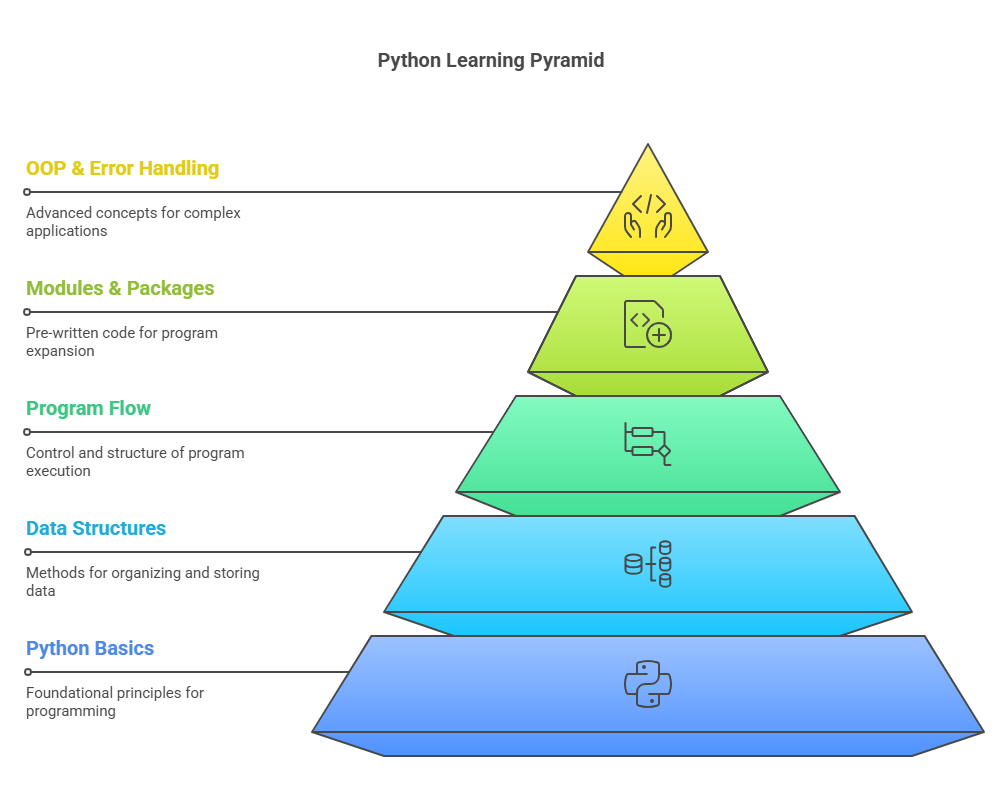
The first step for anyone beginning programming or switching from another language is frequently to learn the foundations of Python. For general programming concepts that work with different languages, these foundational principles offer a strong basis. Some consider Python a popular high-level, general-purpose programming language.
Python Basics And Core Language Fundamentals
It was released in 1991 by Guido van Rossum. Python‘s readability, simple syntax, and convenience of use which enable concepts to be expressed in less lines of code than certain other languages are factors that contribute to its appeal. It strikes a balance between expressive force, ease of usage, and learning ease. Web development, AI, Machine learning, data analysis, and task automation use Python. It supports imperative, functional, object-oriented, and procedural coding.
Installing and doing some basic setup are usually required to get started with Python. You get knowledge about configuring your Python code and programming environment. A text editor or terminal window can be used to run noninteractive programs or scripts, or an interactive interpreter or shell can be used to run programs.
Early on, simple examples are frequently presented to illustrate fundamental output, such as displaying “Hello, World!” to the screen using the print() function. Also taught right away are programming style and documentation, including the use of comments.
It’s essential to comprehend the language’s basic construction. Discovering the fundamentals of data types is part of this. Integers for whole numbers and floating-point for decimals are the two main types that were introduced. Text is expressed using strings. String methods and formatting are covered, along with how to generate, combine, modify, retrieve, and print strings.
Python supports single and double quotes, and multi-line string literals with triple quotes can represent multi-line text. Data storage and retrieval require variables and assignment statements.
Understanding the precedence of operators is a key component of comprehending how Python evaluates expressions, which are constructed using operators. Statements for input and output are also necessary for program interaction.
Additionally, basic data structures which are frequently introduced after basic types are part of Python’s core. Lists, tuples, and dictionaries are examples of aggregate data types that enable the construction of more intricate data structures. Key-value pairs or value sequences are what these are.
Writing functioning programs requires an understanding of program flow and structure. Learning about statements and syntax is necessary for this. Python’s use of indentation to designate code chunks contributes to its renownedly readable syntax. Programs can react intelligently with the help of control flow statements.
This comprises conditional statements that use circumstances to make judgements, such if, else, and elif. When repeating instructions, loops such as while and for are utilised. The execution of loops is controlled by statements like break and continue. In order to promote reuse, organise code, and break down programs into smaller, more manageable components, functions are essential.
Program expansion makes the idea of modules and packages crucial. Collections of pre-written code that you can import and utilise in your own programs are called modules. There are many modules in the Python Standard Library that offer tools for everyday activities.
Basic functional programming notions are among the other fundamental ideas that are frequently discussed. Other important subjects include classes and object-oriented programming (OOP), however these are occasionally covered after the fundamentals.
Gaining knowledge of objects, which in Python stand in for data units, is fundamental. To deal with problems like syntax errors that stop code from running or runtime errors that happen while code is being executed, it is essential to comprehend exceptions and error handling. Gaining an understanding of these foundational concepts will enable you to develop programs, solve issues, automate processes, and prepare you for more complex Python subjects and applications.
